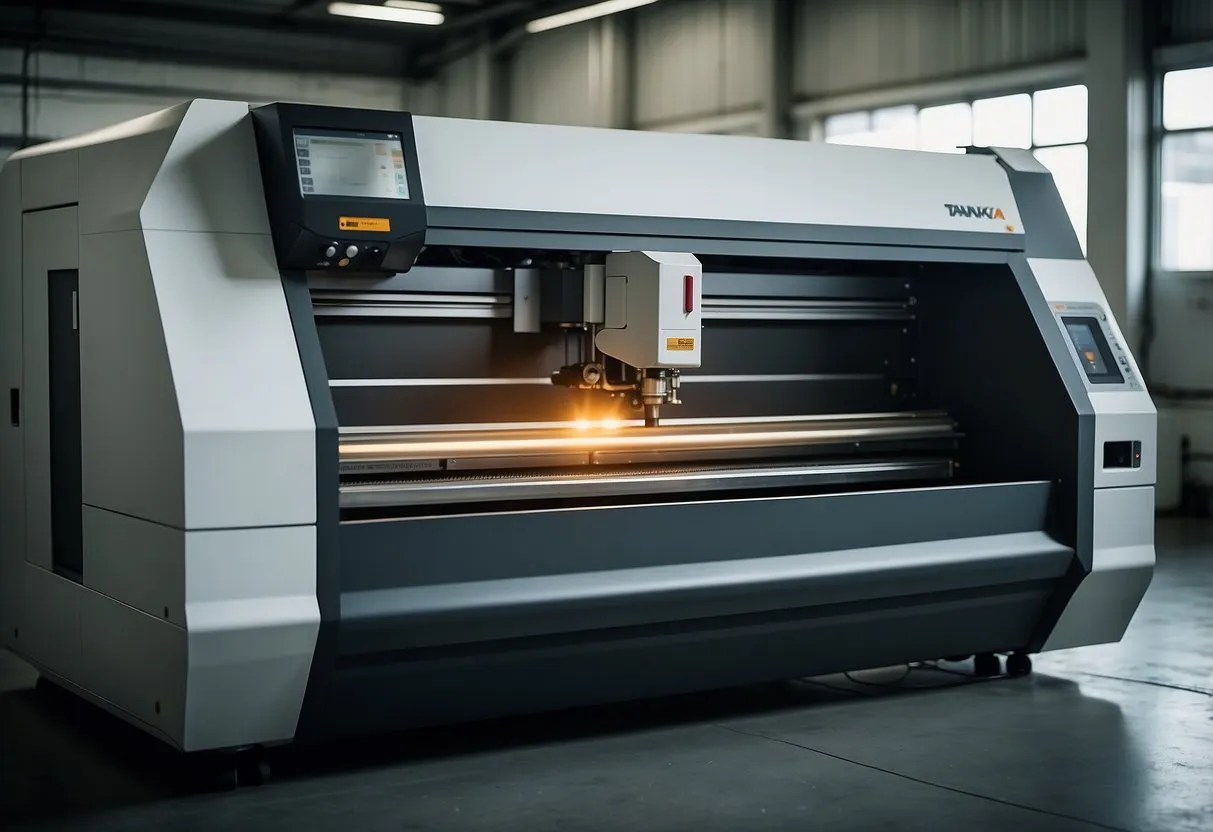When it comes to industrial laser cutting, choosing the right technology can significantly impact your production efficiency, operating costs, and overall output. Among the many options available, Tanaka Fiber Lasers stand out as a superior choice for manufacturers aiming to improve productivity while reducing costs. Below, we’ll explore several key reasons why Tanaka Fiber Lasers could be the perfect fit for your operation, focusing on their low operating costs, minimal consumable usage, maintenance advantages, and faster feed rates compared to traditional CO2 and plasma cutting systems.
### 1. **Significantly Lower Operating Costs**
One of the biggest factors affecting a company’s bottom line is the cost of running machinery. Fiber lasers, especially those from Tanaka, boast significantly lower operating costs compared to CO2 and plasma cutting systems.
– **No Laser Gas Requirements**: Unlike CO2 lasers, which require expensive laser gases such as nitrogen or helium, fiber lasers need no such gases to generate the laser. This eliminates a recurring expense and simplifies the overall setup.
– **Energy Efficiency**: Tanaka fiber lasers are also more energy-efficient, typically consuming 50% to 70% less power than CO2 lasers, reducing your electricity bills.
– **Smaller Footprint**: Fiber lasers have a more compact design, requiring less space, which can lead to lower facility costs.
Over time, these cost reductions can be substantial, allowing you to allocate funds to other areas of your business.
### 2. **Low Usage of Consumables**
Consumable parts, such as electrodes and nozzles, are a significant ongoing expense for plasma cutting systems. In contrast, Tanaka fiber lasers require minimal consumables.
– **Longer-lasting Components**: Fiber laser diodes have a lifespan of about 50,000 to 100,000 hours, which is far superior to the consumables required by CO2 and plasma systems. This means fewer replacements and less downtime.
– **Minimal Lens and Mirror Replacement**: CO2 lasers, in particular, require regular maintenance of mirrors and lenses due to the thermal degradation that occurs over time. Tanaka fiber lasers, however, use a fiber-optic delivery system, eliminating the need for mirrors and minimizing lens wear.
With fewer consumable parts to replace, your business can experience lower costs and less disruption to production schedules.
### 3. **Very Little Maintenance**
Maintenance is not only time-consuming but also costly in terms of both parts and downtime. One of the most significant advantages of Tanaka fiber lasers is their low maintenance requirements.
– **No Optical Components**: CO2 lasers use complex optics that need regular alignment and cleaning. Fiber lasers do not have this issue because the beam is delivered through a fiber cable, requiring no alignment or cleaning.
– **No Moving Parts**: The solid-state design of fiber lasers results in fewer moving parts compared to CO2 lasers, meaning there is less wear and tear and fewer parts that need replacing.
– **Long-term Reliability**: Tanaka fiber lasers are designed to be highly reliable, requiring minimal service over their lifespan, allowing manufacturers to maintain a consistent production flow without frequent interruptions.
This lower maintenance need ensures more uptime and greater productivity, a crucial factor in any high-volume manufacturing environment.
### 4. **Faster Feed Rates**
When it comes to speed, fiber lasers outperform CO2 and plasma cutting systems. For manufacturers looking to increase throughput, Tanaka fiber lasers offer faster feed rates without compromising quality.
– **Higher Cutting Speed on Thin Materials**: Fiber lasers excel in cutting thin materials at higher speeds, making them perfect for industries that work with sheet metals, such as automotive and electronics.
– **Consistent Performance**: Not only do fiber lasers cut faster, but they also provide consistent quality across a wide range of materials, including stainless steel, aluminum, and brass. This is because the fiber laser’s beam is more focused and penetrates materials more efficiently than a CO2 laser.
By switching to fiber laser technology, manufacturers can achieve faster production cycles, higher precision, and better product quality—all of which contribute to greater competitiveness in the marketplace.
### Real-World Example: Switching from CO2 to Fiber Lasers
A metal fabrication company switched from CO2 laser cutting to Tanaka fiber lasers and immediately saw a dramatic reduction in operating costs. Previously, the CO2 laser consumed large amounts of electricity and required regular replacement of consumables like laser gases and lenses. By transitioning to fiber lasers, the company reduced its operating costs by over 50% in the first year alone. Additionally, the faster cutting speeds of the fiber lasers enabled them to increase their throughput by 30%, allowing the business to take on more orders without sacrificing quality.
### Conclusion: Fiber Lasers as the Future of Production
For businesses looking to cut costs, improve efficiency, and boost production output, Tanaka fiber lasers offer the perfect solution. Their lower operating costs, minimal consumable usage, reduced maintenance needs, and faster feed rates make them a highly attractive alternative to CO2 and plasma cutting systems. As manufacturing processes evolve, fiber lasers are rapidly becoming the technology of choice for industries that prioritize efficiency and long-term reliability.
If you’re considering upgrading your production setup, investing in Tanaka fiber lasers is a decision that will provide both immediate and long-term benefits for your business.




